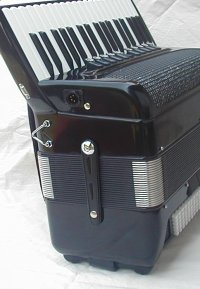|
The underlying considerations |
||||
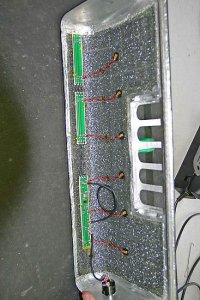
Under the the treble front
you see six
microphones, a mixer- and two extender-pcbs
XLR
connector is hard to discern when the instrument is black 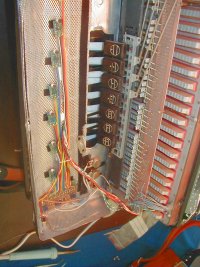 Below
the treble cover Eskil Rommes accordion hiding one of our older systems
(1989) and a midi system - therefore the many wires.
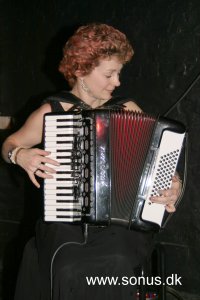 Karen Tweed - a wonderful musician The lead from Karens instrument is barely discernible in all black. 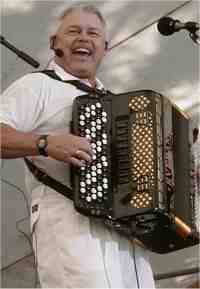 The danish entertainer Lille Palle performs with a sonus.dk wireless-system 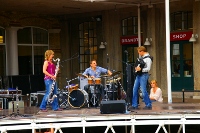 Jesper from phonixfolk.dk has the freedom to move due to his sonus.dk wireless stereo-system. If he want he can walk around while playing 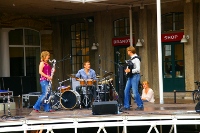 No wires no cable |
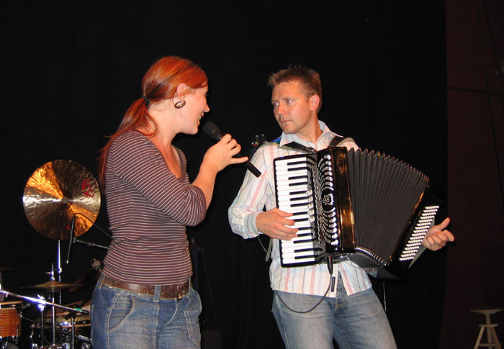 The dream and the reality When you want to amplify an acoustic instrument it is often a dream that it "just has to be higher" - ie an amplification of sound power without coloring the sound and otherwise entirely without problems, feedback or noise. This dream we share fully, it's just hard (impossible ?. ..) to meet in the real world where laws of nature as we know rules. Below are some of the challenges the job provides and how we have sought to meet them. How to avoid acoustic feedback ("howling")? If a microphone is connected to an amplifier so that the speakersignal can be picked up by the microphone, a little noise will be picked up the microphone, amplified and sent out into the speaker, once again captured by the microphone, etc. During very short time the system will go in a self-oscillating mode on more (many) frequencies - that's a law of nature ... This phenomenon sets an upper limit on how much you can amplify an acoustic instrument . There are more possible solutions: you can get the audience to remain calm - you can play louder on the instrument - or you can go closer to the microphone. Our solution relies on to go so close as possible to the sound source, that means: indside the accordion near to its reeds. What about eveness ? (same sound level from all tones) The closer you go the sound-source (the reeds) the bigger is the difference in the soundlevel received from the nearest reed and the the others. Since we have chosen to go as close to the sound source as possible we have a problem. The solution to this is: Many microphones, ideally one for each reed. We have after countless attempts to come up with 6-8 microphones in the treble and 2-3 in the bass works well and that little is gained by using more. How does an accordion sound ? Is the "correct" sound what you hear 1 meter or 5 meters in front ? or 10 cm behind? Or as in our system: inside the instrument ? Anyone can make sure that the sound of an accordion changes by moving around a harmonica being played - especially in near field (0 - 100 cm) there are large fluctuations. Ultimately, this is only something that can be determined by the ears (and what's between ... From interviews with many experienced soundengineers we know that they usually put their tone controls at neutral, taht there is plenty of signal and that they have not experienced any system for amplification of accordions which were easier to have to do in PA contexts. Many musicians have used our microphone system in study contexts - often in a mix with a studio microphone. What about the sound when playing full-power on the instrument? Below the accordion shield are volumes that would be harmful for our hearing if we were stuck inside. We have measured sound pressure levels of 100 to 130 dBspl depending on instrument and playing style. Microphones and electronics must be able to handle these large pressure levels. At this point we have made precautions. (see technical specifications) How is the system powered ? The electronics is powered from an external transformer or DC power supply. The floor box has a built in rectifier and stabilizing circuit which makes the system uncritical concerning choice of power source. This allows the system to be used all over the world. An appropriate transformer / power supply could be purchased locally for a song (in case of emergency, one or two 9 V batteries can be used). By replacing the integrated circuit in the floor box and optimize the whole system we have succeeded in bringing power consumption down so that the system can be powered from a mixing consoles phantom supply, thereby avoiding the power supply on the scene. Can a sonus.dk - system go wireless ? Yes, this have been an demand from day one. We can provide a belt-box with built-in battery, and we can help with info on suppliers of wireless systems and remedies that may be needed to get optimal results. Take a look on this video with phonixfolk.dk the sound quality is much better than on most youtube-videos. |
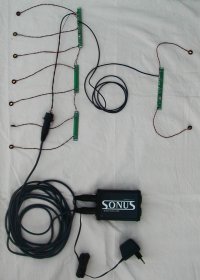 A
complete system, it can
be extended with an arbitrary number of microphones in both bass and treble 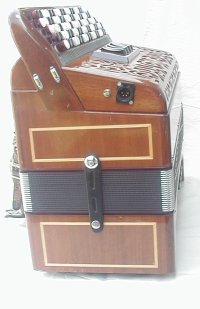 The
XLR connector is the only external visible
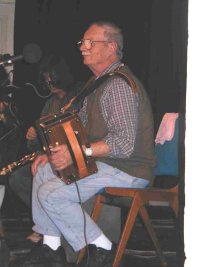 Joe Derrane have played with a sonus.dk system since 1997- unbelievable what he can get out of his small instrument 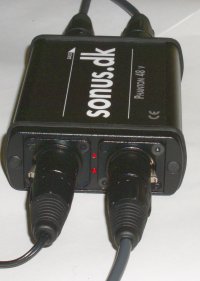 Floor box with everything connected - note the two LEDs which can be very helpfull when troubleshooting. 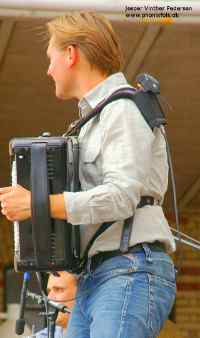 Jesper V. Petersen from phonixfolk.dk plays with a stereo-beltbox and two AKG-transmitters - all placed with some velcro at his strap 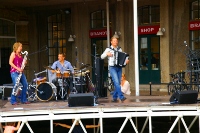 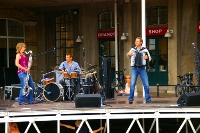 |
||
|
back |
|
|||
updated 08.04.2010 |
||||
